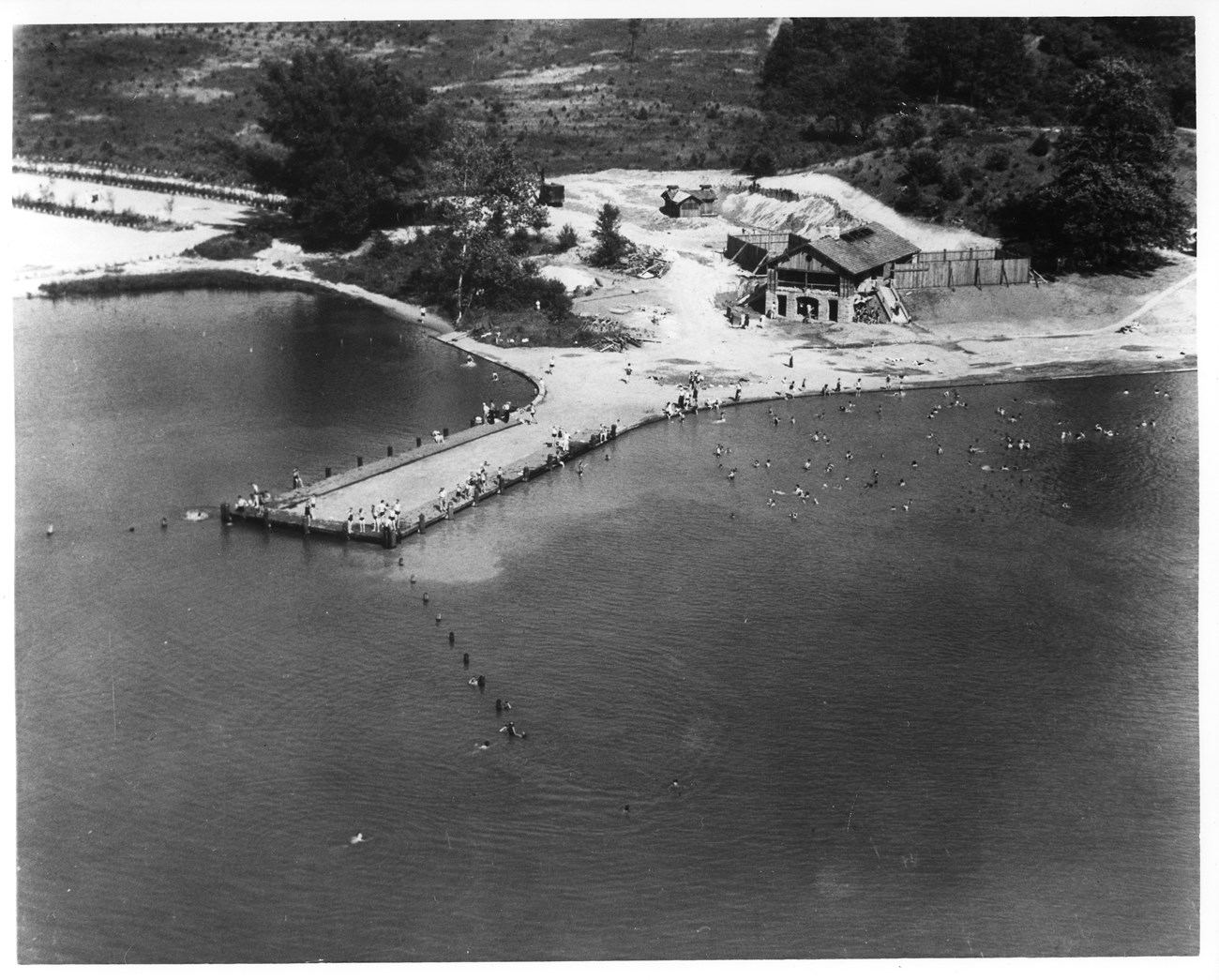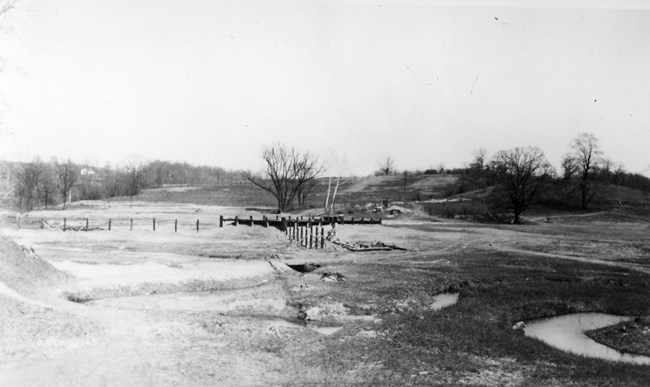Last updated: November 23, 2021
Article
Kendall Lake Through the Years

NPS Collection
When you admire a spot in Cuyahoga Valley National Park, especially one with natural beauty, it is easy to imagine that it has always looked the same. It is also easy to think that nature alone shaped the scenery. However, often neither is the case. Change is the only constant in the landscape, and people are part of the story of change. The story of Kendall Lake reflects the interplay of nature and people through the years.
Before There Was a Lake
Kendall Lake did not exist until the 1930s. The lake now covers the spot where Salt Run and an unnamed stream of similar size used to join to become the main branch of Salt Run. Imagine converging streams and their ravines in place of what is now the lake.
Wetlands were likely part of this landscape. “Because we see so many seeps and springs in the area, it is possible that there was a large headwater wetland complex at this location,” National Park Service Biologist Sonia Bingham, who monitors wetlands at Kendall Lake, said. This naturally occurring water may have helped people decide to construct the lake here. Wetlands still occur where the two primary streams flow into Kendall Lake. The southern wetland has a fairly constant water level, suggesting that it is fed by seeps or springs. It has plants not seen commonly in the park, including blueberry and currant shrubs. “Beaver also live at Kendall Lake today. It is possible that they were part of the wetlands before settlement,” Bingham said.

NPS Collection
Forests surrounded the wetlands up until the 1800s, when the Cuyahoga Valley became predominately agricultural. Historic records from the 1850s show that the Ritchie family farmed here, raising sheep and growing corn. Two decades later, they had become dairy farmers. Records show that they had kept some land as woodlands. However, historic photos of lake construction show the absence of trees, suggesting that the location had been an active part of the farm.

NPS Collection
A Lake for Recreation
In the late 1800s and early 1900s, city dwellers became interested in the Cuyahoga Valley as a place for retreat and recreation. Hayward Kendall, a Clevelander who became wealthy selling coal during World War I, bought the Ritchie farm. When he died in 1927, his will stipulated that the land be used for park purposes and named Virginia Kendall Park in honor of his mother.
By the 1930s, Akron Metropolitan Park District managed Virginia Kendall Park. Its director, H.S. Wagner, recognized the opportunity created by the Great Depression to have the Civilian Conservation Corps (CCC) develop the park. CCC Company 576 carried out a tremendous amount of work to create the park enjoyed by subsequent generations. Kendall Lake, built in 1937 by constructing an earthen dam with a reinforced concrete core across Salt Run, is one of its accomplishments.

NPS Collection
By the 1940s, a sandy beach hosted a crowd of swimmers at the lake, who also used a nearby fishing pier and bathhouse. In winter, toboggan chutes spilled sledders onto the icy lake. The focus of the site had become active recreation, although a trail around the lake invited hiking and recently planted pine trees reflected interest in landscape restoration.

NPS/Tim Fenner
A Shift Toward Passive Enjoyment
By the time Virginia Kendall Park became part of Cuyahoga Valley National Park after 1974, the era of active recreation had ended. The National Park Service’s management philosophy shifted focus to passive recreation that emphasizes enjoyment of the natural and historic character of the area. Trail activities became dominant, although fishing and paddling continue.
In recent years, the National Park Service has had to consider the future of Kendall Lake. A 2003 flood compromised the dam. Through natural sedimentation, the lake was slowly filling in. Recognizing the historic importance of the lake as a CCC project, the National Park Service took actions to preserve it. We rebuilt the dam and dredged the lake. In doing so, we became one more human influence on today’s view.
Explore for yourself this ever-changing landscape along the 1-mile trail around the lake. Parking is available on Truxell Road, 1 mile west of Akron Cleveland Road, Peninsula 44264.

NPS/Moto Photo
Jennie Vasarhelyi leads the division of interpretation, education and visitor services at Cuyahoga Valley National Park. Her guest columns appear in the West Side Leader and in Record-Courier newspapers in Northeast Ohio.
